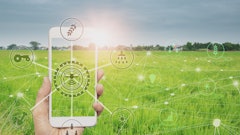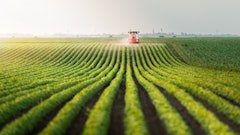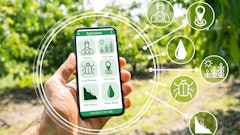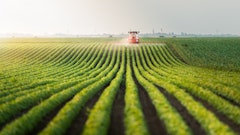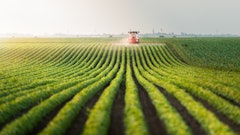
Biomimicry is the design of materials, structures and systems that are modeled on biological entities and processes. Designs found within nature can often serve as a roadmap for optimizing systems and increasing efficiencies across industries.
One of the most powerful and intricate designs is that of the human immune system’s responses to prevent and fight off infections. Replication of this process in an agricultural setting can be a game changer for the industry that mainly relies on traditional pesticides and synthetic fertilizers to protect plants from disease and pests while helping to ensure the overall yield of crops.
Issues posed by traditional pesticides and synthetic fertilizers
Plants are often at risk from pathogens, including viruses, bacteria, and fungi, which inhibit growth and overall crop yield. To protect plants from these threats and stop disease outbreaks, most growers rely on traditional chemical pesticides and synthetic fertilizers.
According to Californians for Pesticide Reform (CPR), pesticides can pose both short and long-term hazards to both humans and our environment. As stated by CPR, examples of acute health effects of pesticides include stinging eyes, rashes, blisters, blindness, nausea, dizziness, diarrhea and death. Examples of known chronic effects are cancers, birth defects, reproductive harm, immunotoxicity, neurological and developmental toxicity, and disruption of the endocrine system. Chronic health effects include cancer and other tumors; brain and nervous system damage; birth defects; infertility and other reproductive problems; and damage to the liver, kidneys, lungs and other body organs.
Fortunately, there are other alternatives to traditional pesticides and synthetic fertilizers that can help rid plants of pests and illnesses and can still help growers safeguard their crop yields. One of which is backed by biomimicry technology.
How does biomimicry technology work to disinfect plants?
An oxidant is a chemical species that removes one or more electrons from another reactant in a chemical reaction. In this case, electricity is used to apply a chemical reaction to the structures of water and salt to create a disinfectant, deodorizer and sanitizer as effective as bleach but without the toxic chemicals.
How is this done? An electrical charge is passed through a salt (NaCl) solution that separates the sodium from the chloride. The chloride is negatively charged and is attracted to the positive side of the electrical charge. There, it bonds with the oxygen and hydrogen from the water to create hypochlorous acid (HOCl). Hypochlorous acid naturally occurs within the human body. Specifically, it is released by white blood cells to fight infection.
This biomimicry process was first applied to water treatments. Each country, including the U.S., sets legal limits on the number of contaminants that can be present in drinking water. In the U.S., the Environmental Protection Agency (EPA) sets legal limits on over 90 contaminants within drinking water. Using the science-backed methodology described above, water can be decontaminated through a means that is non-toxic and safe for people and the environment. The same processes can be applied to plants–vegetables, fruits, wine grapes, cannabis or even flowers, among other crops.
How can biomimicry technologies help humans and the environment?
By not treating the crops we cultivate with toxic pesticides and synthetic fertilizers, growers can help reduce the impact agriculture has on consumers and the planet. Toxic chemicals used in agriculture often contaminate the soil, water, turf and vegetation. Pesticides often pose risks to other animals, birds and beneficial insects.
Transitioning from pesticides to biomimicry technology can also be beneficial to agricultural workers, who are at risk of being exposed to toxic chemicals on a daily basis due to the prevalence of pesticides. Beyond the people who grow our food, consumers of vegetables, fruit, cannabis and other plants treated with pesticides are at risk.
The widespread use of biomimicry technology has the potential to result in safer food and ecosystems as a whole.
What is the drawback of biomimicry solutions?
Why can’t amino acid solutions be found in the cleaning aisles of most department stores? Hypochlorous acid solutions, while tactful at inactivating pathogens, dissipate over time and will lose their efficiency within just a few weeks. For this reason, it’s important that amino acid solutions rely on technology that is able to create the solutions on-site and on-demand as needed.
Aside from being used at the cultivator’s discretion, on-site generation allows for a reduction of transportation of toxic chemicals and reduces the growers’ carbon footprint. The U.S. agriculture industry alone accounted for 11.2% of carbon emissions in 2020. By using on-site, on-demand solutions, cultivators can offset 100 CO2e emissions by reducing chemical shipments.
While there are a lot of benefits to implementing biomimicry solutions in agriculture settings, it is still in its infancy in terms of impact. As mentioned, most growers worldwide are relying solely on the use of traditional pesticides and synthetic fertilizers. It’s up to the industry to raise awareness of and champion new, innovative ways of growing and protecting crops without toxic chemicals.



